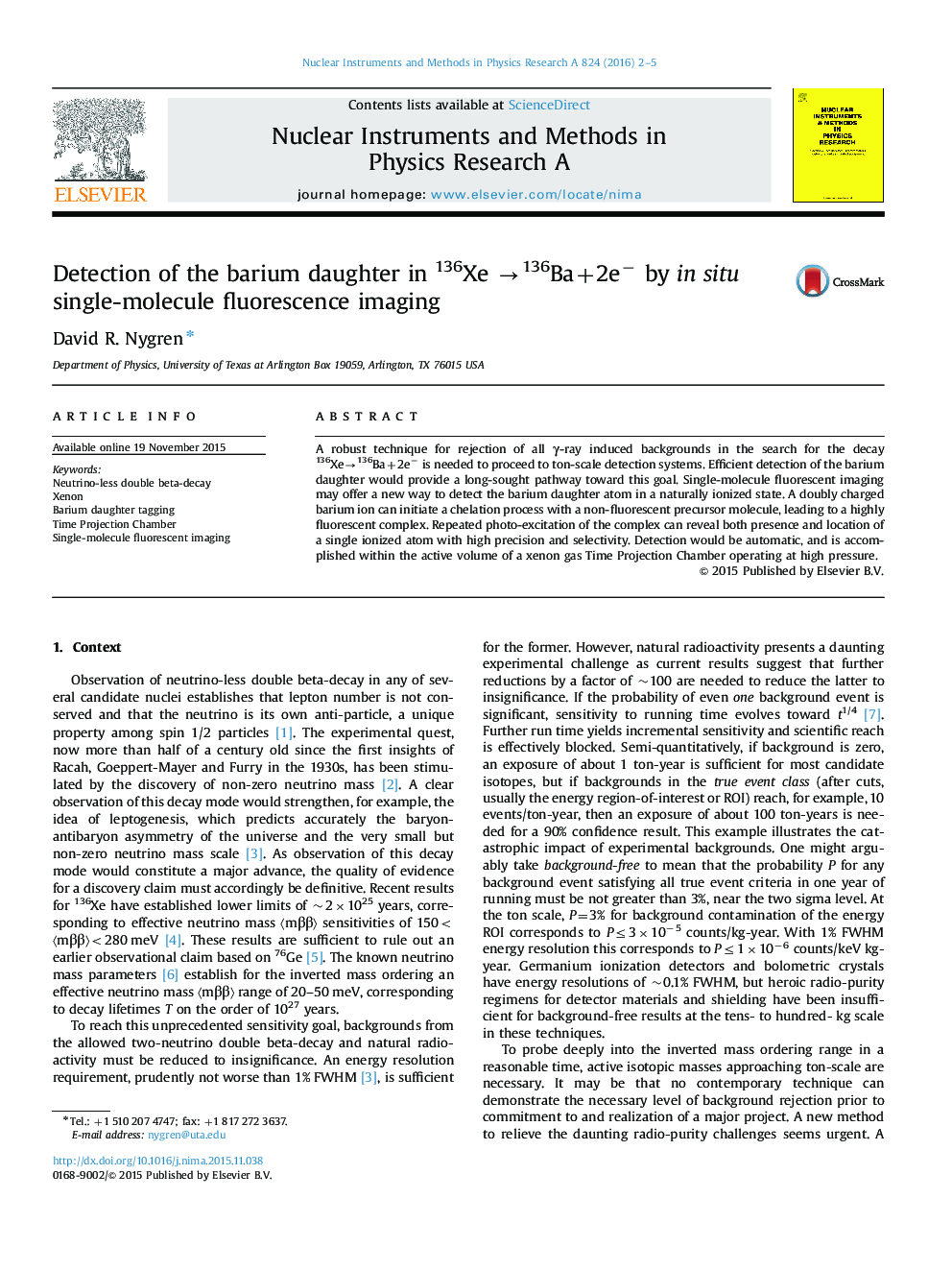| Article ID | Journal | Published Year | Pages | File Type |
|---|---|---|---|---|
| 8169522 | Nuclear Instruments and Methods in Physics Research Section A: Accelerators, Spectrometers, Detectors and Associated Equipment | 2016 | 4 Pages |
Abstract
A robust technique for rejection of all γ-ray induced backgrounds in the search for the decay 136Xeâ136Ba+2eâ is needed to proceed to ton-scale detection systems. Efficient detection of the barium daughter would provide a long-sought pathway toward this goal. Single-molecule fluorescent imaging may offer a new way to detect the barium daughter atom in a naturally ionized state. A doubly charged barium ion can initiate a chelation process with a non-fluorescent precursor molecule, leading to a highly fluorescent complex. Repeated photo-excitation of the complex can reveal both presence and location of a single ionized atom with high precision and selectivity. Detection would be automatic, and is accomplished within the active volume of a xenon gas Time Projection Chamber operating at high pressure.
Keywords
Related Topics
Physical Sciences and Engineering
Physics and Astronomy
Instrumentation
Authors
David R. Nygren,
